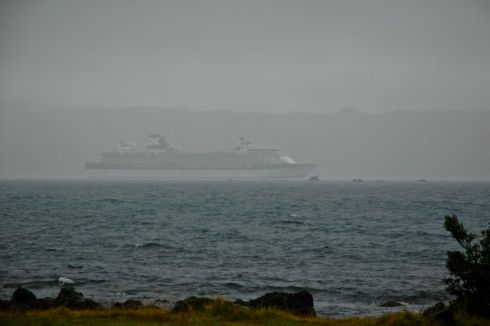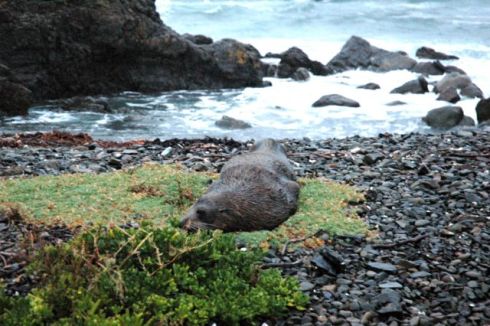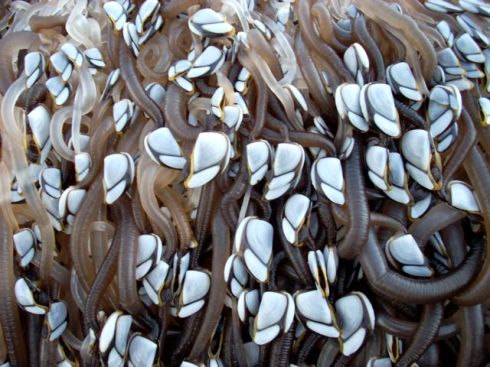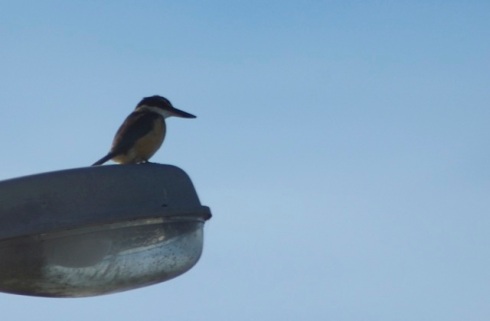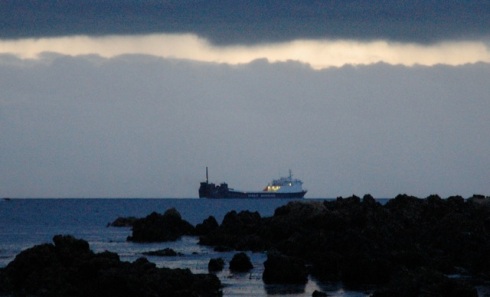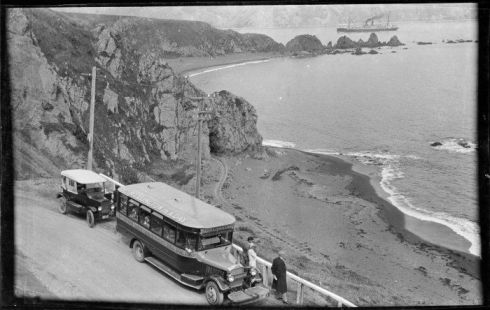It’s very scenic, and the surfers love it. Maybe there’s not too much to say about it, but you get these great tails streaking into the sky, and the air is full of salt.
A whole tree washed up one day, covered in these guys like the freakiest thing I’d seen all year.
According to wikipedia, the Welsh monk Giraldus Cambrensis claimed to have seen goose barnacles in the process of turning into barnacle geese in the twelfth century.
Thanks to the Greater Wellington regional council and the Wellington City Council, the entire peninsula has been possum free since 2004… at a cost of just $100,000.
The native bush and birds are thriving in their absence. Now if only we could do something about the rats and stoats…
He feeds on insects, small crustaceans, and fish, according to wikipedia. You don’t see them all the time, but they’re not too rare either. This guy was hanging around in early June.
According to nzbirds they nest in a burrow either in a clay bank or a tree, very often a decaying willow. To start a tunnel they sit on a branch slightly above and several metres away from the site and fly straight at it, neck outstretched and uttering a peculiar whirring call, and strike it forcedly with the bill tip. They continue until the hole is big enough to perch in and scoop out. The nesting burrow can be as much as 24cm long and will be used year after year.
As wikipedia so accurately points out, Puriri (Vitex lucens) is an evergreen tree endemic to New Zealand. But to me it was just a tall gangly thing I found at the Warehouse in Lyall Bay for $20 about 3 years ago.
I planted him proudly in the back lawn without too much thought for the fact that Puriri can grow up to 20 m tall, with a trunk commonly up to 1.5 m in diameter, frequently thicker. I should be so lucky: it can be a struggle for anything but the hardiest plants to survive in the bay. But he’s growing at quite a rate, now just over 3m tall. Exciting.
The edges of the leaves can get a little burnt off in the Southerlies but mostly it’s ok. I’ve planted a few more up the hill to start a forest and attract Kereru.
Kent has been Strait Shipping’s freighter since 2001. She goes out in almost any weather and has a distinctive engine sound, like an old clapped out car. Here’s a clip of her leaving the heads, Breaker Bay on the left:
Built: 1977, Japan.
LOA: 123m
Beam Overall: 21m
Gross Tonnage: 6862
Draft: 4.76m
Vessel ID: 7627950
According to Simplon she initially ran on a route Great Yarmouth – Bremerhaven – Hamburg – Antwerpen – Le Havre – Lagos – Monrovia – Tema – Abidjan then was chartered to North Sea Ferries for service between Ipswich and Europoort (Rotterdam). She was later renamed Admiral Caribe for a service beyween Miami and Venezuela. In 1982 she was renamed Saint Remy for service out of Marseille, before passing to Kent Line in 1986 as Duke of Anglia for a services from Kent to Zeebrugge. In 1990 she was sold to Norfolk Line and renamed Maersk Anglia. She was chartered to Cobelfret for their Zeebrugge-Purfleet/Dagenham services. In 2000, Maersk Anglia became Maersk Kent, shortened to Kent when sold to Ross Marine of Castletown, Isle of Man, the following year. She was acquired by Strait Shipping shortly afterwards.
Suilven was a Strait Shipping ferry from 1995 to 2002. Her distinction in the rollcall of ships-that-go-past-the-bay is due to some spectacular video footage of her heading into Cook Strait in the big storm of 6 February 2002 (mid summer!). This was filmed from around the corner in Lyall Bay in a once-in-five-or-ten-years kind of storm. The ferries don’t usually run in such heavy seas so it’s quite a rare sight. According to the metservice (link below) the swells were about 8m.
Sadly she capsized and sunk in Fiji in 2015.
 From Breaker Bay. Picture: John Travers
From Breaker Bay. Picture: John Travers
Built: 1974, Norway
LOA: 86.52m
Beam: 15.5m
Gross Tonnage: 3638 tons
Draft: 5m
Service Speed: 13kn
Vessel ID: 7383487



